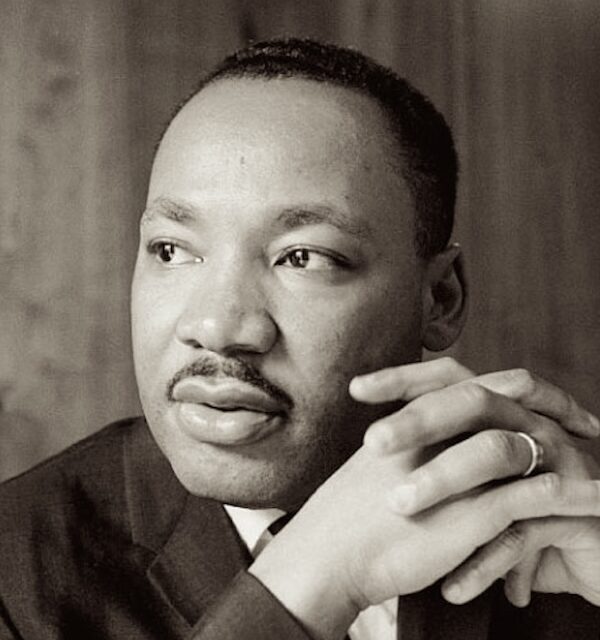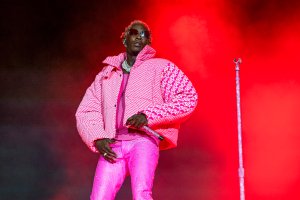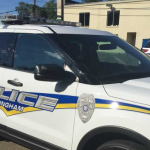By John Rydell
Special to the AFRO

The year was 1954 when Dr. Martin Luther King, Jr. was hired as pastor of Dexter Avenue Baptist Church in Montgomery, Ala. Poised, but unafraid to make “good trouble,” King would soon be thrust into the national spotlight over a consequential fight for racial equality.
Shortly after, Rosa Parks, a secretary for the local chapter of the NAACP, was arrested on a municipal bus for refusing to give up her seat to a White man. Her arrest so incensed Black residents that they formed a new coalition to launch a boycott of the bus system. At the age of 25, it was King who was chosen by parishioners and older pastors alike to lead the boycott.
Rev. Alvin C. Hathaway, retired pastor of Baltimore’s Union Baptist Church, weighed in on the task handed down to the young King.
“Martin was the perfect figure: young, charismatic and educated,” said Hathaway. “He inherited a lot of gravitas because of his family lineage. He was able to excite younger people into the movement– that was needed to really put the fuel behind it.”

Speaking on the family ties King had to the fight for human and civil rights, Baltimore native, author and historian Phillip J. Merrill says “People overlook the impact that his father ‘Daddy King’ had on his life.”
“He from what I like to say ‘good timber,’ and when you come from good timber, you’re already miles ahead of the other contemporaries you interact with, because what you’ve gone through in your family upbringing and experiences helps set you onto the right path.”
Hathaway told the AFRO during the 1950’s, many senior clergy members understood the dangers of staging boycotts–the threats of being arrested, beaten or even killed. So he says those pastors asked King “Are you afraid?” He replied “I’m not afraid.”
Yet, just a month after the boycott began, King’s house in Montgomery was firebombed. The young pastor was not home, but his wife, Coretta, and young daughter were. Both escaped unharmed. The following month, King, Rosa Parks, Rev. Ralph Abernathy and dozens of other Black citizens were arrested and charged with organizing the boycott. But King and his many supporters finally agreed to end the year-long boycott finally after the U.S. Supreme Court ruled that segregation on public buses was unconstitutional.
Hathaway says King’s leadership during the lengthy bus boycott attracted attention of the national media.

“Martin understood how to motivate the Black church, so his ability to have meetings in the Black churches, to motivate people was key,” said Hathaway.
Seven years later, King would make his first national appearance on NBC’s Meet the Press. The interview came just days before King’s appearance at the historic March on Washington in August 1963.
Kurt L. Schmoke, former Baltimore mayor and current president of the University of Baltimore, fondly remembers attending the march as a teenager with his mother and hearing King deliver his famous “I have a dream” speech.
Schmoke says he still has a photo of King when he was a student at Morehouse College in Atlanta. Schmoke’s father, who attended Morehouse, is also in the photo, seated behind King in the school’s chapel.
“Dr. King’s rise demonstrated the historic significance of the African-American church in efforts to achieve equality in the country. The church has always been an integral institution in that effort,” said Schmoke.
Merrill says that while leaders like King gained international attention for his work, there were many other civil rights activists who faded into the background of the movement over time.
“The civil rights movement will always be much more than Dr. King, Rosa Parks, and a few other people that mainstream society has allowed us to have.”
“The civil rights movement will always be much more than Dr. King, Rosa Parks and a few other people that mainstream society has allowed us to have.”
He mentions people like civil rights attorney Clarence M. Mitchell Jr., longtime Capitol Hill lobbyist for the NAACP, as one activist that did great work alongside those in the international spotlight. Mitchell played a pivotal role in helping to enact the 1964 Civil Rights Act.
To effectively maintain the lengthy bus boycott, Merrill says there were countless other Black citizens who played a critical role. He points to residents with cars who volunteered to drive other Blacks to and from their jobs. Many were often pulled over by police and issued tickets for minor offenses. King, himself, was arrested after picking up passengers at a carpool stop.
“What we fail to realize is that King was a human being,” said Merrill, adding that King was a regular person that had flaws and frailties. As a young man, Merrill says King was known for going into barbershops in the South, talking with everyone and practicing some of his speeches.
“Let’s celebrate King, but let’s recognize that he was a player on the team that included many other people,” said Merrill. “King can only win when you have multiple players all pushing in the same direction, and you have a good strategy and management and leadership who are not operating alone.”
The post Portrait of a man: A look at Dr. Martin Luther King Jr. and his continued impact on the community appeared first on AFRO American Newspapers.










